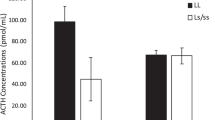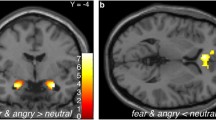Abstract
Rationale: While the relationship among CSF 5-HIAA, impulsivity, and aggression is well characterized in males, its investigation in females is limited, and no studies have assessed its generalizability across primates by making simultaneous comparisons between and within closely-related species. Objectives: We tested three hypotheses. First, that female rhesus macaques would have lower CSF 5-HIAA concentrations and be more aggressive than would female pigtailed macaques. Second, that females of both macaque species would exhibit an inverse relationship between interindividual differences in CSF 5-HIAA concentrations and rates of severe aggression. Third, that subjects with high CSF 5-HIAA concentrations would be higher in social dominance within their respective groups than would subjects with low CSF 5-HIAA concentrations. Methods: We obtained CSF samples from 61 individually housed female primates of two closely related species: rhesus macaques (Macaca mulatta) and pigtailed macaques (Macaca nemestrina). We later placed subjects in unisex social groups, and correlated interindividual differences in CSF 5-HIAA with aggression, wounding, and acquisition of social dominance rank. Results: Between-species analyses indicated higher CSF 5-HIAA concentrations in pigtailed macaques, and higher rates of high-intensity aggression, escalated aggression, and wounds requiring medical treatment in rhesus macaques. Within-species analyses indicated that interindividual differences in CSF 5-HIAA concentrations were inversely correlated with escalated aggression and positively correlated with social dominance rank. Conclusions: These findings show that agonistic and social differences between closely-related species are correlated with CNS serotonin activity, as species that show relatively high rates of severe aggression also tend to have low concentrations of CSF 5-HIAA. We conclude that serotonergic functioning plays an important role in controlling impulses that regulate severe aggression and social dominance relationships in both male and female primates, and that between-species differences in agonistic temperament can be predicted by species typical CNS serotonin functioning.
Similar content being viewed by others
Author information
Authors and Affiliations
Additional information
Received: 30 December 1998 / Final version: 3 June 1999
Rights and permissions
About this article
Cite this article
Westergaard, G., Mehlman, P., Westergaard, G. et al. CSF 5-HIAA and aggression in female macaque monkeys: species and interindividual differences. Psychopharmacology 146, 440–446 (1999). https://doi.org/10.1007/PL00005489
Issue Date:
DOI: https://doi.org/10.1007/PL00005489




